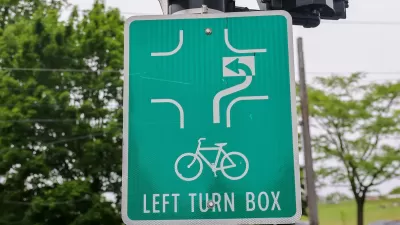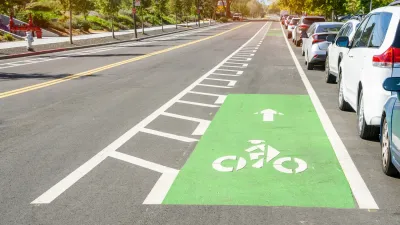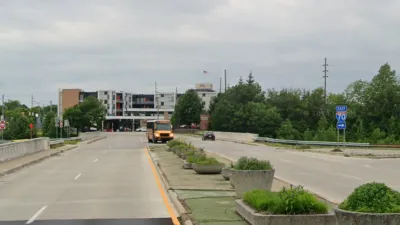After 11 years, the federal transportation manual is getting an update to reflect the rise of autonomous vehicles, shared mobility, and modernized pedestrian infrastructure.

The Federal Highway Administration has extended the public comment period for its update of the Manual of Uniform Traffic Control Devices (MUTCD). The manual, which hasn't been updated since 2009, "sets federal standards for the signs, markings and signals that help instruct road users on how to safely move through our communities."
As reported by Kea Wilson in Streetsblog, advocates hope that the revised manual will take into account new programs and mobility options such as bike share, scooters, and autonomous cars and implement higher standards for protecting vulnerable users. Rather than prioritize vehicle throughput above safety, planner Don Kostelec told Streetsblog, the manual should include the highest standards for safety at crosswalks and other vulnerable interaction points.
The main reason for the manual's upcoming revision seems to be the rise of autonomous vehicles, "which rely on regular road markings to navigate complex road environments," but some of these changes may work in favor of bike advocates. For example, the revised manual calls for bike facilities to be "segregated from other vehicle traffic using physical barriers where practicable and that road markings are needed to denote the end of a bike lane that is merged with traffic" in order to accommodate "machine vision." Such policy changes in manuals like the MUTCD, argues BikeUtah program director Mike Wiltsie, is "the best way we can bring about systemic change in our streets."
FULL STORY: Memo to Buttigieg: Fix Our National Traffic Control Standards

Maui's Vacation Rental Debate Turns Ugly
Verbal attacks, misinformation campaigns and fistfights plague a high-stakes debate to convert thousands of vacation rentals into long-term housing.

Planetizen Federal Action Tracker
A weekly monitor of how Trump’s orders and actions are impacting planners and planning in America.

In Urban Planning, AI Prompting Could be the New Design Thinking
Creativity has long been key to great urban design. What if we see AI as our new creative partner?

How Trump's HUD Budget Proposal Would Harm Homelessness Response
Experts say the change to the HUD budget would make it more difficult to identify people who are homeless and connect them with services, and to prevent homelessness.

The Vast Potential of the Right-of-Way
One writer argues that the space between two building faces is the most important element of the built environment.

Florida Seniors Face Rising Homelessness Risk
High housing costs are pushing more seniors, many of them on a fixed income, into homelessness.
Urban Design for Planners 1: Software Tools
This six-course series explores essential urban design concepts using open source software and equips planners with the tools they need to participate fully in the urban design process.
Planning for Universal Design
Learn the tools for implementing Universal Design in planning regulations.
Gallatin County Department of Planning & Community Development
Heyer Gruel & Associates PA
JM Goldson LLC
City of Camden Redevelopment Agency
City of Astoria
Transportation Research & Education Center (TREC) at Portland State University
Jefferson Parish Government
Camden Redevelopment Agency
City of Claremont





























